As you may know, I spent most of the last week in Charlotte, NC. On my last night, I got to visit uptown and enjoy the pocket parks along Tryon Street. Here’s one of them at the intersection of Tryon and Trade:
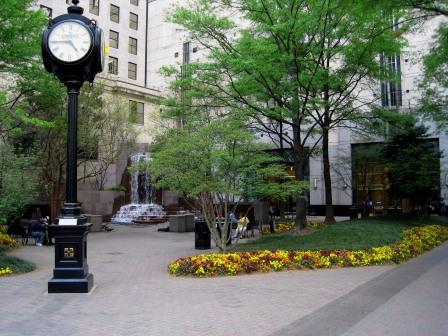
It has a lovely water feature – it was a warm day and the breeze from the fountain cooled the air off significantly.
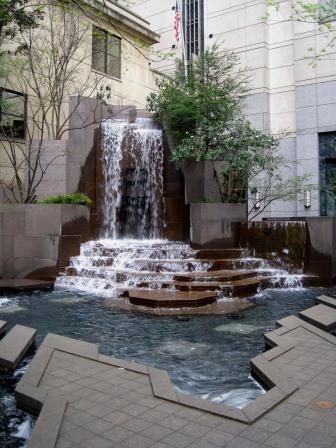
A little further on was this plaza, featuring jasmine-covered “umbrellas”:
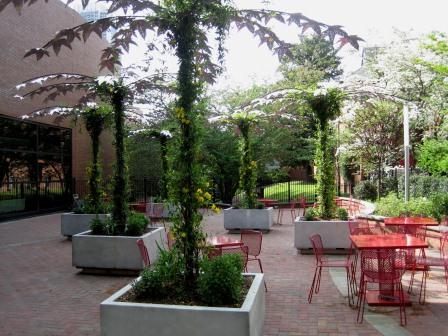
The umbrellas were actually sculptures – little works of art on their own:
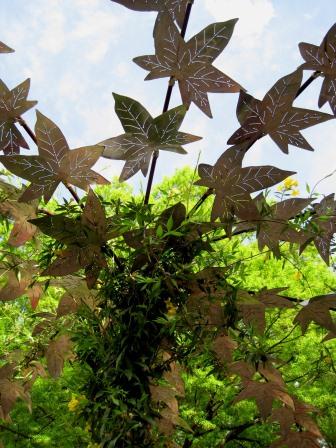
The nicest things about the uptown area were the wide streets and equally wide sidewalks. Lots of light could get through these urban corridors, supporting a canopy of willow oaks:
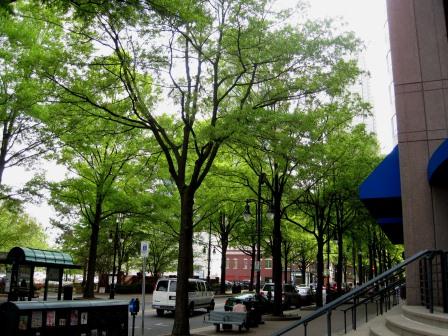
This is an urban area that not only invites pedestrians, but treats them to a botanical experience that unfortunately isn’t common in our cities. Hopefully this is the future of urban greenspaces…and not just a delightful anomaly.
I agree on the value of botanicals in public spaces but isn’t it possible to use natives instead of exotics?
Monta, the problem with urban spaces is that they are often so different than what native plants will tolerate. What’s important is (1) using noninvasive species and (2) creating physical structure to enhance diversity of birds, insects, etc. There is substantial research demonstrating that the use of noninvasive, non-native species does not harm biodiversity and in fact usually enhances it.
If that’s carolina jasmine (and I think it is), it is a native to NC.
Those are lovely little parks. Big parks are great but I suspect little parks like this make more of an impact on a daily left to people who live in dense urban areas.
Hi L
inda,
There is a reason those Tyron and Trade street trees look so wonderful – over 25 years ago city arborist Don McSween worked to get the city to build a custom suspended pavement system so that each tree received adequate amounts of soil. While McSween wanted 1,000 ft3 of soil per tree, they ended up getting around 700 ft3 each – which is still pretty good, especially compared to average street trees.
How well these trees are doing today, and their contribution to the downtown Charlotte community, is a testament to McSween’s forward thinking and science-based planning. Trees grow bigger and healthier in more soil. You can read a bit more about him and the Tryon and Trade trees here: http://www.deeproot.com/blog/blog-entries/charlotte-nc-trees-in-suspended-pavement-look-great-25-years-later
Thanks, Leda, that’s fascinating! I had heard from Tom Smiley at Bartlett Labs about the tree vaults earlier, but had no idea how great the trees would look till I saw them for myself.
And thanks for the link to the blog posting on this!